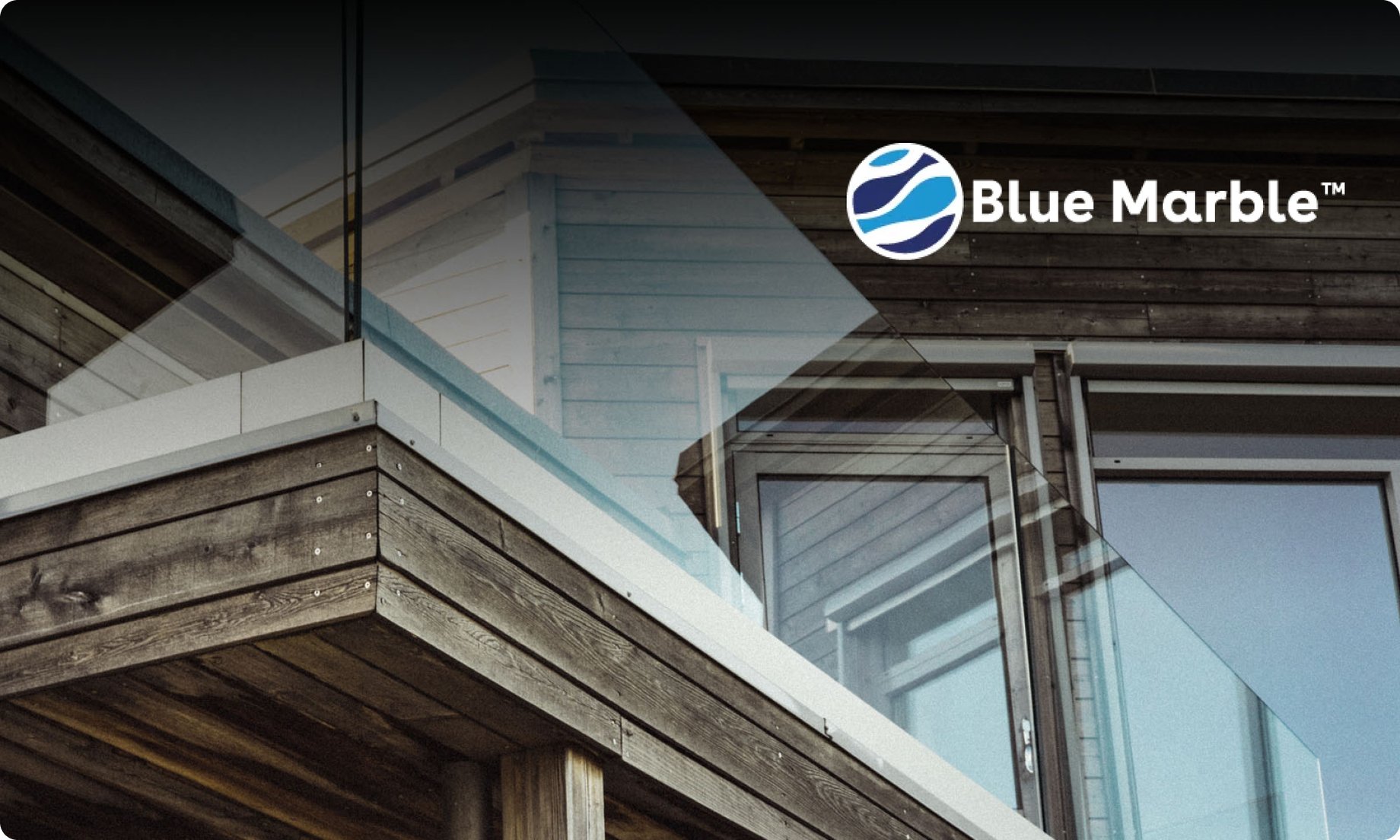For construction product manufacturers, securing environmental product declarations (EPDs) can be a complex, resource-intensive process. With evolving regulatory requirements and rising demand for transparency across the supply chain, the need for efficient, accurate life-cycle assessment (LCA) is more urgent than ever.
Blue Marble, a UK-based sustainability consultancy, is helping manufacturers tackle that complexity head-on. By combining their advisory experience with the technical power of One Click LCA software, they deliver streamlined, fully compliant and third-party verified product-specific EPDs — at scale and on schedule.

A practical partnership that delivers
For manufacturers aiming to produce EPDs efficiently, the partnership between Blue Marble and One Click LCA provides a smart, scalable solution. Together, they reduce manual effort, speed up product life-cycle modeling, and ensure regulatory compliance with confidence.
Blue Marble offers deep knowledge in life-cycle assessment, EPD strategy, and regulatory frameworks. Their consultants lead every phase of the EPD journey, from data collection and quality checks to third-party verification and publication. For manufacturers, this reduces the need for internal technical resources and ensures accurate outputs.
One Click LCA supports this with automation that simplifies even the most complex datasets. The platform handles modeling, consistency checks, and verification-readiness in line with EN 15804+A2 standards, drawing from global environmental databases. The platform integrates seamlessly with a wide range of data sources, including 20+ BIM tools and global environmental databases, enabling faster and more reliable assessments.
“We match the best of both worlds — consultant expertise with software efficiency. It means we can serve more clients, reduce cost, and improve outcomes — all without compromising technical integrity.” Sam McGarrick, Head of Advisory at Blue Marble
Case study: Streamlining complexity for Q-railing
Q-railing, a global manufacturer of modular railing systems, approached Blue Marble with a major challenge: producing EPDs for a portfolio of over 5,500 components, each with multiple materials, finishes, and configurations. The requirement came directly from a major specifier in the UK — meaning product declarations were needed not just for compliance, but for immediate market access.
Producing individual EPDs for every variation wasn’t viable. Instead, Blue Marble developed a product-specific, system-level EPD strategy — grouping Q-railing’s components into core product assemblies based on function, material, and use context. Instead, Blue Marble developed five system-level EPDs that organized related components into core product systems — such as Easy Alu, Stainless Steel Post Railing, and Glass Balustrades. This method enabled flexibility in specification while maintaining traceable, standardized environmental performance data. While each EPD covers multiple components, all are product-specific and based entirely on Q-railing’s own manufacturing data — ensuring full compliance and accuracy without relying on industry-wide averages.
A system-level EPD covers a group of closely related components or configurations that serve a similar function. While it represents multiple SKUs, it is still product-specific — based on the manufacturer’s own data and modeling.
Key outcomes:
- Delivery within six months, including cradle-to-grave modeling and third-party verification by an independent verifier
- Substantial savings in time, cost, and internal resources
- A future-ready EPD framework that supports global application
5,500 components
specified in five system level EPD certificates
Beyond compliance: Commercial value and long-term impact
For Q-railing, the verified EPDs didn’t just meet client expectations — they became a tool for future growth. This system-level approach enables Q-railing to meet specifier needs across markets without duplicating work for every stock keeping unit. The structured, repeatable model now supports multiple regions and reduces the effort required for updating environmental product declarations as products evolve.
“An EPD is not just a tick-box for compliance. It’s a strategic asset that unlocks tenders, informs clients, and drives product improvement. When built correctly, it pays back far more than it costs,” Sam McGarrick explains
The five-phase EPD approach
Blue Marble follows a proven, five-phase methodology designed to remove ambiguity and maintain momentum throughout the EPD certification process.
1. Kick-off & discovery
Project boundaries are mapped, stakeholders aligned, and a custom data collection strategy is created — ensuring only relevant questions are asked.
2. Data collection & supply chain coordination
Blue Marble provides tailored support for gathering primary data on materials, transport, packaging, and manufacturing processes — working directly with client teams and suppliers to fill any gaps.
3. Life-cycle assessment modeling
Using One Click LCA, Blue Marble runs detailed product life-cycle assessments, including sensitivity analysis where needed. The software’s automation and compliance tools significantly reduce modeling time.
4. Third-party verification
The completed LCA is submitted via One Click LCA’s verification-ready platform, minimizing back-and-forth and ensuring a structured response process with verifiers.
5. Publication & internal training
Once published, Blue Marble provides training for sales and technical teams, helping manufacturers use their EPDs to win work and satisfy client inquiries.
A simple guide to EPD: Learn what are environmental product declarations and how they benefit manufacturers.
From uncertainty to action: Answering the top 5 most common EPD questions
Q1: Where do I start with producing an EPD?
This is often the first barrier. Most manufacturers don’t know what’s needed until they begin. The starting point is understanding what product life-cycle data already exists — typically including:
- Bill of materials and input volumes
- Energy consumption at each manufacturing site
- Packaging types and transport details
- Waste management and treatment methods
Blue Marble works directly with client teams and suppliers to map and collect this data — streamlining what can often be the most time-consuming phase. Their data templates reduce duplication and ensure relevance.
One Click LCA complements this with access to a global database of over 300,000 verified datasets and powerful automation tools, helping standardise modeling across even the most complex product portfolios.
Tip: Access free training for you and your team
One Click LCA offers free EPD and LCA Bootcamps, ready-made templates, and structured onboarding — helping new users gain confidence and get results fast.
Q2: What are the biggest misconceptions about EPDs and LCAs?
Many manufacturers fear their results will reflect poorly — but an EPD isn’t about passing or failing. It’s about visibility.
“If your environmental performance is high, you’ve now got a baseline to work from. That’s a far better position than having no data at all,” as Sam McGarrick puts it.
Another myth? That life-cycle assessments are too complex to manage. With Blue Marble’s expert guidance and One Click LCA’s intuitive tools, the process becomes structured, scalable and manageable — helping teams deliver value without adding overhead.
Q3: How much does it cost to produce and verify an EPD?
It depends on the complexity of your products and supply chain — but more manufacturers now see EPDs as a strategic investment, not just a compliance expense. Life-cycle data often reveal operational inefficiencies, resource use patterns, optimization opportunities in material inputs, or emissions hotspots — insights that can lead to direct cost savings in materials, energy, or waste reduction.
More importantly, verified EPDs are now required for many public and private procurement frameworks across Europe and North America. For global certifications like LEED, BREEAM, and DGNB, EPDs are no longer optional — they’re a gateway to high-value markets.
How to read an EPD: Learn how to read, understand and use an EPD.
Q4: What more can I do with my EPD once it’s published — and how can I improve future results?
Publishing an EPD is just the starting point. Once your EPD is in place, you can use it as a strategic asset — both commercially and operationally.
Internally, it provides a verified baseline for your product life-cycle impacts, giving you the insight needed to drive improvement. Blue Marble supports manufacturers in analyzing which stages (e.g. raw materials, transport, manufacturing) have the highest carbon intensity or environmental burden. From there, you can identify practical interventions—such as increasing recycled content, reducing transport distances, or improving energy efficiency.
Externally, your EPD can now be used across certifications (like LEED, BREEAM, DGNB) and procurement frameworks. One Click LCA also offers tools like EPD Analytics and Manufacturers Pages, helping you track where your EPD is being viewed, added to projects, specified or included in LCAs — turning visibility into value.
Sam McGarrick noted: “EPDs are typically valid for five years — but the real value lies in how you use the data to improve your product and engage with clients. It’s a marketing tool, a compliance tool, and a roadmap for progress — all in one.”
Manufacturers Pages: Get your products and sustainability credentials in front of thousands of specifiers. Be visible and get specified.
Q5: Can an EPD be used for different clients or certifications?
Absolutely. Once verified and published, an environmental product declaration can be used across multiple green building certifications — LEED, BREEAM, HQE, DGNB — and is valid for both private tenders and public procurement across the UK and Europe.
One Click LCA also supports multi-language EPD output (e.g. German, Japanese), increasing market flexibility.
Measuring the environmental impact of complex products with expert-led automation
As EPDs become mandatory across more sectors and regions, manufacturers need solutions that are not only compliant — but scalable, fast, and commercially viable.
The partnership between Blue Marble and One Click LCA delivers exactly that: expert-led strategy backed by powerful automation. It’s an approach proven to deliver complex EPDs — like Q-railing’s five declarations covering 5,500 components — in record time.
Whether you're publishing your first EPD or scaling across a global portfolio, this model gives you the tools and insight to lead with confidence — now and in the future.
Carbon Experts Newsletter
Industry news & insights — straight to your inbox
Want to learn more?
Laura Drury • May 30 2024
Justyna Michalik-Minken • Mar 31 2025
Justyna Michalik-Minken • Mar 10 2025
Laura Drury • Mar 21 2025
